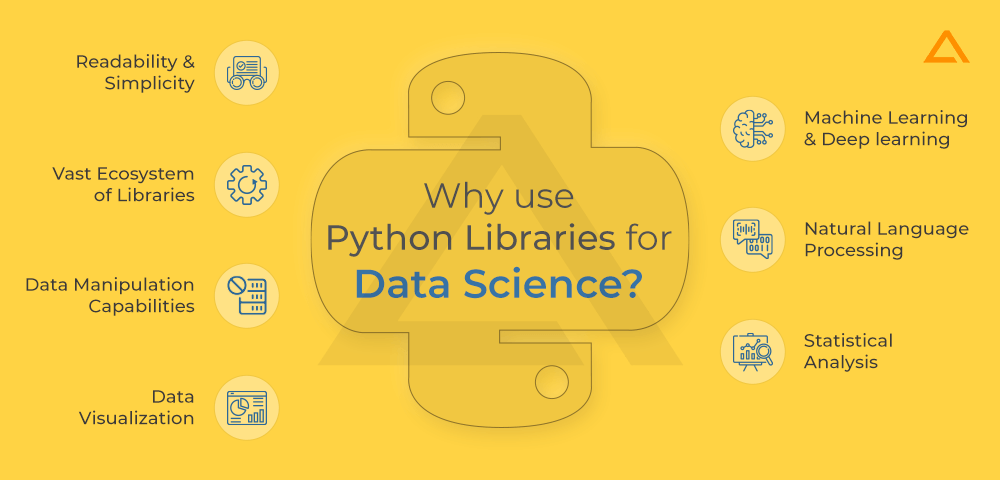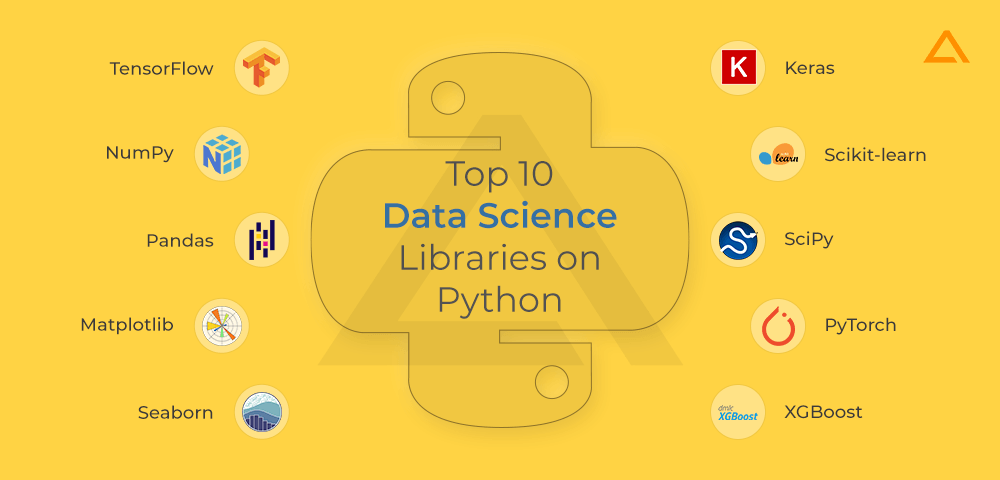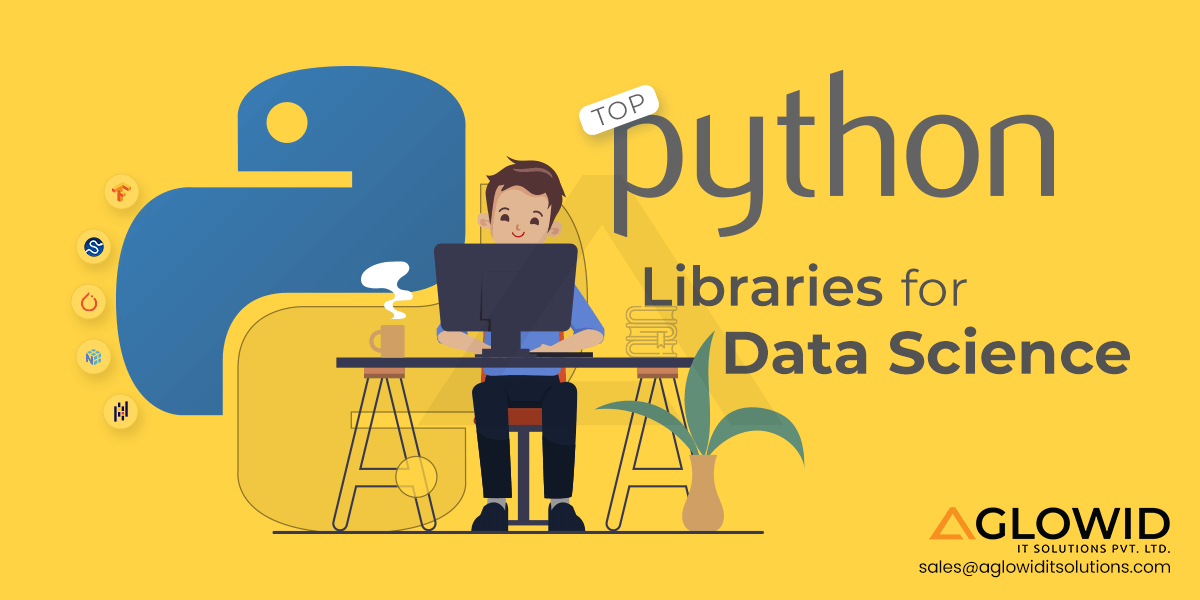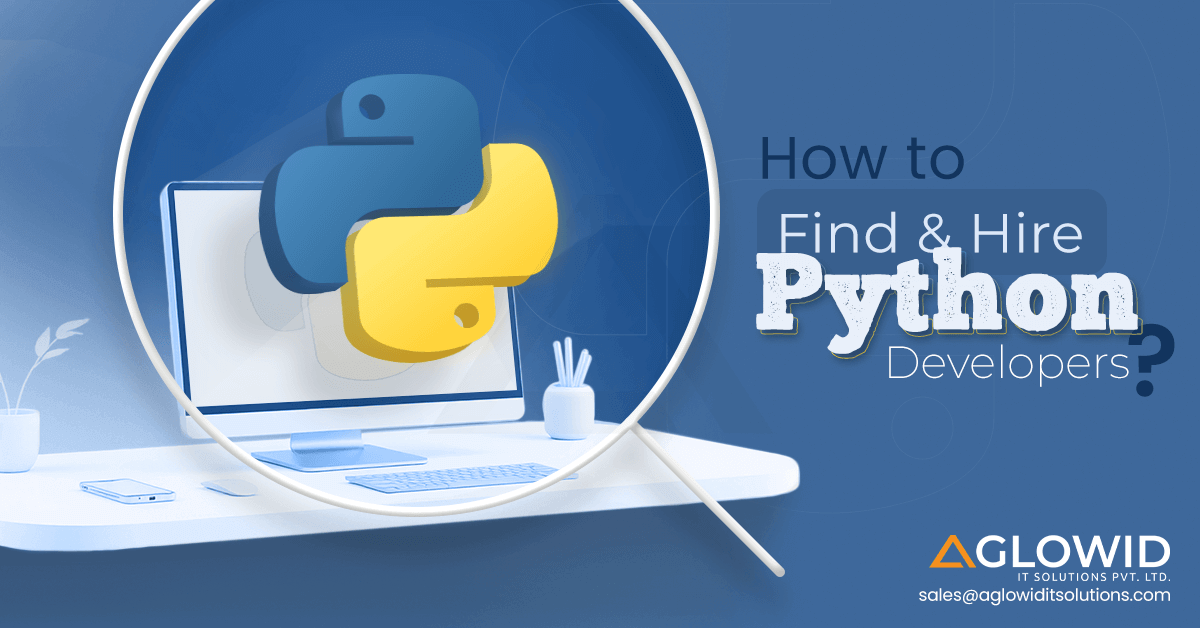Quick Summary:
Are you a data scientist looking for Python libraries to use in you next project? or are you a beginner who’s learning data science? You’re at the right place. Several Python libraries stand out for their ability to do diverse data science activities such as data processing, analysis, visualization, and machine learning. What are the essential libraries that any data scientist must know? In this blog post, let’s examine the most popular Python libraries in data science.
Data science is incredibly important in a variety of businesses in this digital age. Organizations use data to acquire important insights, make wise decisions, and gain an advantage over competitors. Because of its simplicity, versatility, and broad library support, Python, a strong and adaptable programming language, has become a top choice for data scientists.
The intrinsic design principles of Python, plus the enormous ecosystem of libraries created especially for data analysis, processing, visualization, and machine learning, make it valuable in the field of data science. These Python libraries for data science give data scientists effective resources to manage enormous datasets, carry out difficult computations, examine and visualize data, create predictive models, and generate insightful information. Moreover, Python’s versatility also extends to application development with a range of powerful Python GUI frameworks that empower developers to create engaging interfaces. Now that you have some idea about Python’s popularity, let’s look at why data science Python libraries are so popular.
Why do we use Python libraries for data science?
Python is known as one of the best data science programming languages universally. Many things contribute to its popularity, including:

Readability & Simplicity
Python’s syntax is renowned for being clear and uncomplicated. It emphasizes code readability, thereby making it more approachable for both novice and seasoned programmers. Data scientists can concentrate on resolving complicated data problems rather than getting bogged down in minute linguistic minutiae because to Python’s clear and intuitive nature.
Vast Ecosystem of Libraries
A rich ecosystem of data science-specific libraries and frameworks is available in Python. These libraries cover several aspects of the data science workflow, including data processing, analysis, visualization, machine learning, and deep learning. Compared to building complicated capabilities from scratch, data scientists can employ existing tools by utilizing well-documented and widely used libraries, saving time and effort.
Data Manipulation Capabilities
Python has strong modules that are excellent at handling data manipulation jobs, such NumPy and Pandas. In order to perform mathematical calculations and interact with multidimensional data, NumPy offers effective numerical operations on big arrays. On the other hand, Pandas offers a variety of configurable data structures (such as Series and Data Frame) and a wide range of data manipulation, modification, and analysis techniques.
Data Visualization
Python has a set of libraires for Data visualization some of the popular ones are Matplotlib and Seaborn are widely used for data visualization. Matplotlib offers a comprehensive range of plotting functions, allowing data scientists to create various charts, graphs, and visualizations. Seaborn, built on top of Matplotlib, provides high-level interfaces and aesthetically pleasing statistical visualizations, enabling data scientists to communicate insights from data effectively.
Machine Learning & Deep learning
Python’s use in machine learning and deep learning has grown significantly in recent years. Thanks to libraries like Scikit-learn, several machine learning techniques and tools for data preparation, model selection, and evaluation are available. Both TensorFlow and Keras, excellent libraries for deep learning and neural networks and built on top of Python, provide adaptable frameworks for creating and refining complex models.
Natural Language Processing
NLP activities are commonly performed using Python packages like NLTK (Natural Language Toolkit), which plays a pivotal role in the realm of Python Sentiment Analysis Libraries. With its extensive range of tools and resources, NLTK covers tasks such as text preprocessing, tokenization, stemming, and sentiment analysis. This comprehensive toolkit is indispensable for extracting valuable insights from unstructured text data.
Statistical Analysis
Several statistical tools for data analysis are available in Python’s Stats model’s package. It offers capabilities for undertaking statistical modeling tasks such as hypothesis testing, time series analysis, regression analysis, and more. In order to investigate correlations, test hypotheses, and get statistical knowledge from their datasets, data scientists might use Stats models.
Now that we have covered the benefits of using Python in Data Science, let’s look at the best python data science libraries.
Top 10 Python Data Science Libraries
Python offers a diverse range of data science libraries that are specially designed to handle various aspects of data science. Let’s dive into some of the essential Python data science libraries.

#1. TensorFlow
Stars: 176K |Forks: 88.7K |Contributors: 3407
Mainly used for: machine learning & deep neural networks research
License: Apache-2.0 license
We will begin our list of python data science library for data science with TensorFlow. TensorFlow is a cutting-edge deep learning and neural network library that is revolutionizing the artificial intelligence sector.
Because of its cutting-edge computational graph-based methodology, it enables the efficient execution of complex mathematical operations on enormously scaled numerical calculations. As a result, time series analysis, natural language processing, and image categorization have all advanced. It enables data scientists to construct and train deep learning models easily.
Due to its scalability, flexibility, and broad support for advanced approaches, TensorFlow is a go-to framework for resolving difficult data challenges. For data scientists to fully realize the potential of deep learning across various applications, it continues to be a leader in promoting innovation.
#2. NumPy
Stars: 23.9K |Forks: 8.3K |Contributors: 1502
Mainly used for: Scientific Computing
License: BSD-3-Clause
Next in the line of python data science library is NumPy. It is a core toolkit for scientific computing, used by data scientists to effectively manage and analyze data with the help of sophisticated numerical operations. Mathematical and statistical analysis are revolutionized by NumPy’s N-dimensional array object, which performs high-performance computations on huge datasets. It equips data scientists with the skills necessary to easily carry out difficult computations, linear algebra operations, and data transformations. As a vital tool for data scientists working in a variety of fields, NumPy has efficient algorithms and a large function library.
#3. Pandas
Stars: 38.9K |Forks: 16.3K |Contributors: 2954
Mainly used for: Analyzing data
License: BSD-3-Clause
Next in the curated list of python data science library is Pandas. The incredibly flexible data manipulation and analysis package known as Pandas has changed how data scientists deal with structured data. Pandas makes data exploration, cleaning, and transformation easier because to its distinctive Series & Data Frame data structures. In order to handle missing data, grouping, merging, and other issues, it provides a wide range of functions. Panda is a crucial tool for data manipulation and analysis across many fields because it enables data scientists to extract insights from datasets effectively.
#4. Matplotlib
Stars: 17.6K |Forks: 7K |Contributors: 1310
Mainly used for: creating static, animated, and interactive visualizations
Following in the list of Python data science libraries is Matplotlib. It is a robust data visualization library that gives data scientists the tools they need to produce interesting and instructive visual representations of their data. Matplotlib facilitates the creation of a variety of plots and charts, including line plots, scatter plots, bar charts, and histograms, thanks to its extensive feature set and versatility. Its customizable attributes provide flexibility in adjusting axes, labels, colors, and styles. Matplotlib is essential for effectively communicating data insights, uncovering trends, and identifying patterns, making it an invaluable asset for data visualization in data science endeavors.
#5. Seaborn
Stars: 10.9K |Forks: 1.7K |Contributors: 184
Mainly used for: Statistical Data Visualization
License: BSD-3-Clause
Succeeding in the list of Python libraries for data science is seaborn. The beautiful data visualization package Seaborn transforms how data scientists investigate and explain complicated relationships in their data. Seaborn makes creating aesthetically stunning and statistically useful charts easier because of its distinctive high-level interface. It offers several different types of graphs, including scatter plots, bar plots, box plots, violin plots, and heatmaps. Due to its distinct qualities that allow data scientists to uncover hidden patterns, spot trends, and gather meaningful information, Seaborn is a crucial tool for data visualization across a range of fields.
Also Read: – Python Security Essentials: Best Practices & Techniques
#6. Keras
Stars: 58.7K |Forks: 19.4K |Contributors: 1132
Mainly used for: Deep Learning
License: Apache-2.0 license
Next in the list of best python data science libraries is Keras. It is a neural networks library that transforms the process of constructing and training deep learning models. It provides a user-friendly interface that simplifies the creation of intricate architectures for tasks such as image classification and natural language processing. Keras offers a modular and adaptable framework, enabling data scientists to experiment with different deep learning models quickly. By abstracting away technical complexities, Keras accommodates users of all expertise levels. Its strong community support and comprehensive documentation further solidify its position as a top choice for deep learning in data science endeavors.
Are you looking to hire Python developer?
Hire a dedicated team from Aglowid for high-quality python developers who are equipped with the latest Python skill-sets
#7. Scikit-learn
Stars: 55K |Forks: 24.4K |Contributors: 2682
Mainly used for: machine learning
License: BSD-3-Clause license
Let’s move on in the list of Python data science libraries is Scikit-learn. From it’s extensive machine learning library for tasks including selecting the best models and evaluating data processing, data scientists can use a variety of tools. Thanks to its user-friendly interface and consistent API, scikit-learn makes it easier to apply numerous machine learning techniques for classification, regression, clustering, and dimensionality reduction.
It enhances the modeling process by providing a wide range of functions, including as feature scaling, cross-validation, and hyperparameter adjustment. For data scientists looking to build and test reliable machine learning models across several domains, Scikit-learn is a useful tool because of its emphasis on simplicity and versatility.
#8. SciPy
Stars: 11.4K |Forks: 4.8K |Contributors: 1339
Mainly used for: Scientific Computing
License: BSD-3-Clause license
Next, in the list of python data science libraries is SciPy. It’s an influential scientific computing library, amplifying Python’s prowess in data science. With its vast repertoire of functions and utilities for numerical optimization, integration, interpolation, linear algebra, and signal processing, SciPy empowers data scientists to conquer intricate mathematical challenges. It serves as a cornerstone for conducting accurate and efficient scientific computations, delivering novel insights to shape the world’s understanding of complex phenomena. From cutting-edge numerical algorithms to robust statistical analysis, SciPy stands at the forefront of propelling the data science community towards ground-breaking discoveries.
#9. PyTorch
Stars: 68.6K |Forks: 18.8K |Contributors: 2824
Mainly used for: Machine Learning
License: BSD-3-Clause license
Next in the list of Python libraries for data science is PyTorch. PyTorch, a state-of-the-art deep learning library, is changing the artificial intelligence environment. PyTorch makes it simple to execute complex neural networks since it uses a computational graph-based method. Its user-friendly interface makes building, training, and deploying models easier. Among researchers and practitioners, PyTorch stands out because of its dynamic nature, which makes experimentation and debugging easy. The performance of PyTorch is enhanced by its strong GPU acceleration support. The growth of computer vision, natural language processing, and many AI areas is led by PyTorch, which equips data scientists to push the limits of deep learning. This has a profound impact on the direction of intelligent technologies in the future.
#10. XGBoost
Stars: 24.3K |Forks: 8.6K |Contributors: 2824
Mainly used for: Machine Learning
License: Apache-2.0 license
Last but not the least in the list of Python data science libraries is XGBoost. It is a ground-breaking gradient boosting library is revolutionizing machine learning. XGBoost transforms predictive modeling and data analysis with its state-of-the-art algorithms and unrivaled performance. XGBoost integrates poor learners into an effective ensemble model by utilizing boosting’s power. The efficiency and generalization of the model are enhanced by its sophisticated features, such as parallel computing and regularization techniques. This special library has attracted a lot of interest from academia and business, demonstrating its versatility in various fields, from challenging machine learning to practical applications. Data scientists can acquire remarkable predictive capabilities and fully utilize gradient boosting using XGBoost.
Wrapping Up!
Python is a versatile language that has become essential part in data science. Its simplicity and extensive data science useful Python libraries for data science empower data scientists to manipulate, analyze, and visualize data efficiently. Its flexibility allows seamless integration with other tools, expanding the possibilities or collaboration and innovation. Python’s strong community support ensures continuous growth and development in data science. In summary, Python is the go-to language for data scientists seeking to drive impactful insights and solutions from data.
have a unique app Idea?
Hire Certified Developers To Build Robust Feature, Rich App And Websites.
Also Check:




